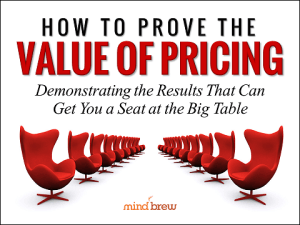These days it’s harder than ever to get people to agree on the facts.
In a society where everyone seems to be accusing everyone else of reporting “fake news”, it’s no surprise that people have become naturally skeptical.
That natural skepticism increases exponentially whenever we’re presented with facts that don’t line up with our opinions. If you need proof, the next time you eat lunch with co-workers, start a conversation where you mention scientific reports about human contributions to global warming, whether raising the minimum wage benefits the economy, whether vaccines cause autism, whether organic food is better for you, or whether most people can benefit from a gluten-free diet.
We’re kidding, of course. We don’t want you to talk about any of those things with your co-workers. We can tell you from experience that it won’t end well unless you know ahead of time that you all agree. People on both sides think that they are the ones with the real facts, and they are not going to change their minds.
You see, on some issues people tend to cling to their beliefs and opinions no matter what scientists and experts tell them.
Unfortunately, that mentality sometimes creeps into the business arena.
As pricing professionals, we often find ourselves playing the role of the “scientist” or “expert” who has conducted a study that challenges some of management’s opinions. Maybe an executive believes very strongly in a particular product. Maybe he feels you need to be in a certain market. Maybe he thinks one special customer needs preferential pricing. In these cases, it’s going to be tremendously difficult to change his opinion by delivering the facts.
Compounding the problem, many executives feel skeptical about pricing as a discipline. While management can often see the importance of pricing, very few business leaders have experience in the field. And like everyone, they distrust what they don’t understand.
And, as pricing people, we don’t do ourselves any favors by repeatedly hammering home the numbers. Because most of us are “numbers people,” it seems obvious to us that people will change their opinions when confronted by the facts.
The truth is, the facts aren’t enough to change minds.
If you want to prove the value of pricing and convince management to make strategic changes that will benefit the company, you need to tell them a story. Give them context. Help them interpret the facts and figures. Don’t be afraid to offer suggestions for how the company could be doing better.
Instead of just coming in with numbers, here’s just a few simple suggestions:
- Walk through scenarios and tell war stories to make it real so they can recognize the big picture (and problems) in a way they can relate to.
- Speak to how the improvements will feed the overall company objectives so they realize this isn’t simply a pricing opportunity.
- Focus on capturing some quick wins and low-hanging fruit so you’re not simply showing them numbers, but showing some actual results.
It’s not hard to see that these approaches are much more likely to influence the management’s behavior than numbers alone. And as a side benefit, it’s also more likely to leave management with a positive impression of the pricing function (and you).
For more tips on how to boost your reputation and influence within your company, check out the express guide Proving The Value Of Pricing. It explains the metrics and measurements that the C-Suite cares most, techniques to explain your findings and recommendations in ways they’ll understand, as well as key things you should be careful to avoid.













